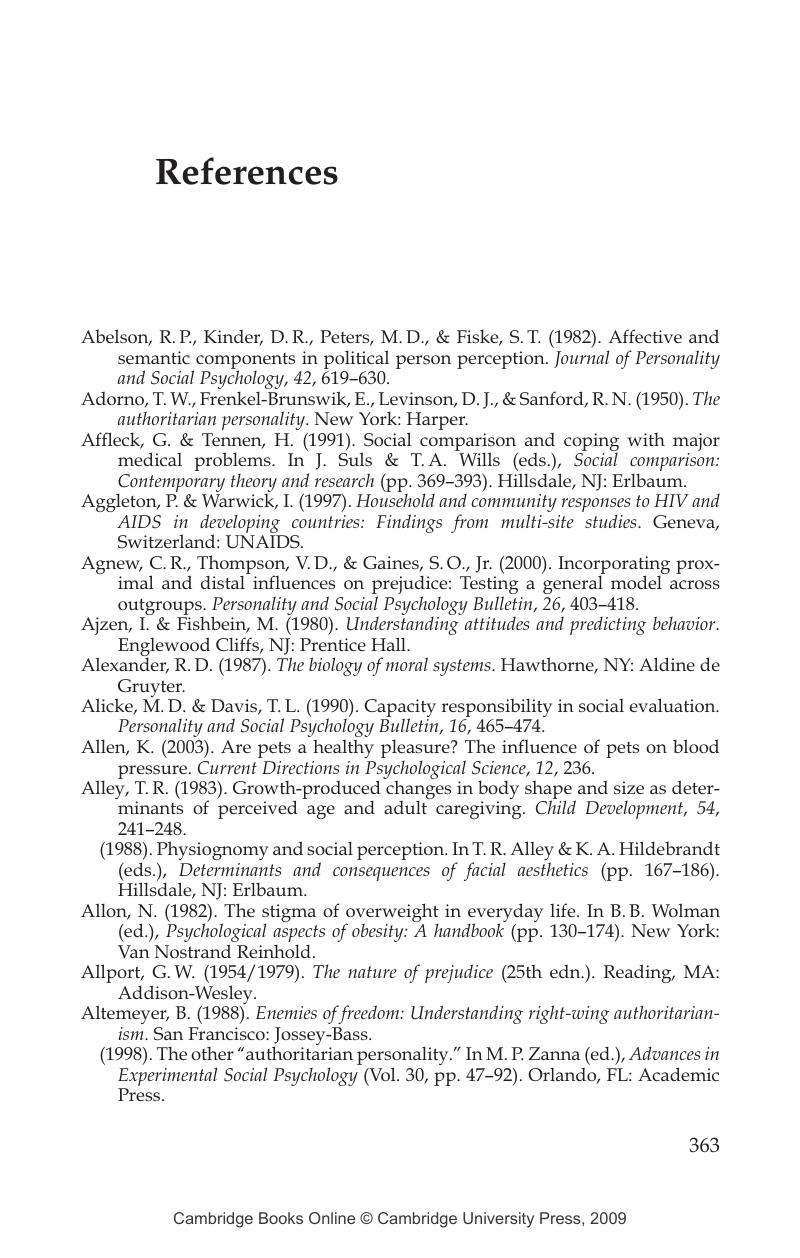Book contents
- Frontmatter
- Contents
- List of figures
- List of tables
- Preface
- Acknowledgments
- 1 Introduction
- 2 Evolutionary origins of social responses to deviance
- 3 Mental representations of deviance and their emotional and judgmental implications
- 4 Meeting individuals with deviant conditions: understanding the role of automatic and controlled psychological processes
- 5 Individual differences in responding to deviance
- 6 Variations in social control across societies, cultures, and historical periods
- 7 A focus on persons with a deviant condition I: their social world, coping, and behavior
- 8 A focus on persons with a deviant condition II: socio-economic status, self-esteem and well-being
- 9 Theorizing about interventions to prevent or reduce stigmatization
- Notes
- References
- Index
- Studies in Emotion and Social Interaction
- References
References
Published online by Cambridge University Press: 22 September 2009
- Frontmatter
- Contents
- List of figures
- List of tables
- Preface
- Acknowledgments
- 1 Introduction
- 2 Evolutionary origins of social responses to deviance
- 3 Mental representations of deviance and their emotional and judgmental implications
- 4 Meeting individuals with deviant conditions: understanding the role of automatic and controlled psychological processes
- 5 Individual differences in responding to deviance
- 6 Variations in social control across societies, cultures, and historical periods
- 7 A focus on persons with a deviant condition I: their social world, coping, and behavior
- 8 A focus on persons with a deviant condition II: socio-economic status, self-esteem and well-being
- 9 Theorizing about interventions to prevent or reduce stigmatization
- Notes
- References
- Index
- Studies in Emotion and Social Interaction
- References
Summary

- Type
- Chapter
- Information
- Stigmatization, Tolerance and RepairAn Integrative Psychological Analysis of Responses to Deviance, pp. 363 - 401Publisher: Cambridge University PressPrint publication year: 2007



